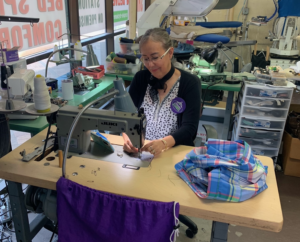When you take your clothing to your local dry cleaner in order to have the delicate materials cleaned and pressed, you see the rows of bagged customer clothes on hangers, hear the machines and potentially even smell the chemicals that are involved in the process, but you probably have almost no idea what steps actually are involved in the process. What you expect of your dry cleaner is to remove stains from clothing, clean any dirt, debris or odors from the garments, press them to remove wrinkles and present them to you for pickup in a neat plastic bag that protects them after they have been cleaned. However there is far more to the process than just the obvious things that you see, and great care is taken to not only present you with clothing that looks like new but also to not damage your garments in the process. Dry cleaning can be seen as several steps in a process from the time you drop off your clothes until the time you pick them up, and understanding the process will probably give you a better idea as to why there are costs. The process is far more complicated than just dropping your clothes into a washing machine and then pressing them with an iron, and as a matter of fact the entire industry of dry cleaning is in place because certain garments are made of materials that cannot effectively be washed with water without being damaged. The process is actually not “dry” as the name would infer, but instead involves the utilization of specific chemicals that will not damage the threads of the garment.
The stages of the dry cleaning process:
Step one: Detailing. The garments that you have dropped off at the dry cleaner are prepared for the process. This will generally mean that they are measured from the blocking and any ornamental buttons are either protected or removed. The entire garment is evaluated to determine if they can be effectively cleaned without creating damage.
Step two: Stain Removal. The dry cleaner will use a variety of stain removal techniques depending on the nature and composition of the stain as well as the fabric that the garment is constructed with. The most common stain removal technique is soaking in specialized cleaners.
Step three: Cleaning. The dry cleaner will use a variety of pure solvents to remove dirt and debris as well as odors from your garments. The type of cleaning process used can range from dry to wet cleaning, and is dependant upon garment evaluation, makeup, staining and level of fragility.
Step four: Hand Finishing. Each garment is then finished by hand sing our professional pressing machinery.
Step five: Minor Repair if Requested. If you want your garment to be repaired beyond the cleaning process it will be completed at this stage. We can repair loose hems, fix open seams and re-attach loose or missing buttons as well as a variety of other repairs.
Step six: Inspection. Each garment that has been trusted with our care is individually inspected in order to assure that all requested processes have been completed to the most professional standards. Your satisfaction is our goal.
Step seven: Packaging. Each garment is placed in a specialized poly garment bag which will minimize any wrinkling and retain the freshness that the dry cleaning process produces.



